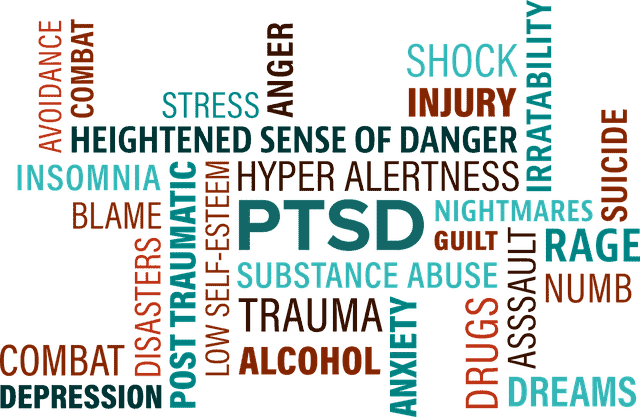EMDR and mindfulness are two practices which are growing in popularity as ways of letting go of past traumas and finding some sense of internal calm and peace. Just how closely related are they though in terms of how they work and their effectiveness?
EMDR and mindfulness are closely related in terms of some of the beneficial outcomes they deliver to people who practice them, such as a greater acceptance of unpleasant life events which they had previously struggled to get over. They can both be used to make peace with distressing past events.
In fact a major reason we feature both topics on this website is that they are indeed related in the sense that they are both ways of letting go of the past, hence the tagline of the site – EMDR and mindfulness resources for letting go.
However, there are certain differences between EMDR and meditation in terms of efficacy and cost. In general, EMDR is a far more powerful and faster acting way of resolving past trauma, but is also more expensive, whilst mindfulness is much slower in resolving past difficulties but a completely free and portable practice that anyone can undertake with relative ease.
Let’s look in more detail at each practice in turn and then the differences between the two.
A Brief Summary of EMDR
EMDR in 2 Minutes
We have already covered how EMDR works in detail in our lengthy article on the EMDR process, but we will summarize the main steps of the treatment below. Traumatic experiences are accessed and processed using a very specific methodology. Here is the general outline:
- Client History – Identify target memories.
- Preparation – Prepare the client appropriately for the therapy.
- Assessment – Fully assess and evaluate target memories, feelings, beliefs etc.
- Desensitization – Use eye movements or other forms of bilateral simulation to process memories.
- Installation – Install positive beliefs about self to replace negative beliefs and affects associated with memories.
- Body Scan – Eliminate any remaining physiological symptoms with further bilateral stimulation.
- Closure – Return client to safe calm equilibrium as session ends.
- Re-evaluation – Check that all aspects of memory have been fully processed.
The general idea is to tap clients neurologically into unresolved traumatic experiences, and then use some kind of bilateral stimulation to stimulate the mind/brain into processing the trauma once it has been reactivated. This most commonly involves getting the person to follow the therapist’s hand movement backwards and forwards, though other methods can be used.
When done correctly, EMDR is a very powerful therapeutic process which allows people who have been suffering from trauma for a long time to get to the point where traumatic experiences no longer bother them. They are seen as just another experience and the memory of them no longer burdens the person. They are better able to move on with their lives.
A Brief Summary of Mindfulness Meditation
Mindfuless by contrast involves using a series of meditation practices which can also allow a person to more easily let go of unpleasant experiences in their past.
To effectively do this, the person needs to be using Vipassana or Insight meditation rather than Samatha (calmness) meditation. See our article comparing the two types of meditation.
Vipassana meditation basically consists of meditations involving the five senses – seeing, hearing, tasting, smelling and touching – plus the internal thought processes of the mind. The idea behind this kind of meditation is to pay moment to moment attention to any one of these phenomena, bringing the attention back whenever the mind wanders.
The classic form of this for beginners is the standard breathing anchor meditation, where the person simply pays attention to their breath moving in and out of the body at the nose, stomach, or any other place. Whenever the mind wanders, the object is to notice where it went and then bring it back to the breath.
Repetitive practice of this meditation is very effective in calming but also clearing the mind, giving greater peace and tranquility to the person. It also strengthens the attentional circuitry of the brain, allowing in time for greater focus and concentration in all areas of life.
Over months of practice, this meditation can also allow a person to gradually let go of powerful attachments, especially unpleasant life experiences which have stuck with them psychologically. More advanced meditations are available specifically to explore these kinds of difficulties.
This is a very brief thumbnail sketch of mindfulness. It can be used to treat conditions like anxiety and depression but for dealing with deeper rooted trauma, a lot of patience and practice is required. Let’s contrast mindfulness with EMDR in a little more detail.
How are Mindfulness Meditation and EMDR Related?
Both EMDR and mindfulness are related, in that they are both different ways of healing from past trauma and letting go of unpleasant experiences in a person’s life. EMDR does this by accessing and processing unpleasant memories using bilateral stimulation; mindfulness does this by exploring difficulties through meditation practice.
The mindfulness process however is much slower, and requires consistent daily practice over a long period of time to deliver this result.
More immediate benefits of improved calmness and equanimity can be felt when practising mindfulness, but to get to the point of letting go of traumatic experiences requires more in depth practice and more advanced meditations over a long period of time. One has to be prepared to be very patient with this process.
By contrast, EMDR can be a much more powerful and fast acting method of processing past trauma, often delivering cathartic results within minutes of the treatment being administered and resulting in rapid improvements in a person’s quality of life within as little as a few sessions of therapy.
Francine Shapiro on EMDR vs Mindfulness
There are several potential reasons for this, but a key factor here is that EMDR is a very efficient as well as effective form of therapy. Processing several key standout experiences within a certain class of experience (eg. humiliation, rejection, physical abuse) has the ripple effect of also resolving all similar experiences within that class of experience.
In other words, you don’t have to work with every single traumatic experience you have ever had in your life. You just have to work with some key experiences of each type and this will flow on to all other similar experiences.
Since traumatic memories and the associated emotions are often stored neurologically on the same pathways in the brain, processing several to resolution can by proxy process all others stored on the same pathways.
This is another huge benefit to the EMDR process compared to mindfuleness and other forms of therapy. Not only is it very powerful but also a very efficient and comprehensive form of treatment and you can get a whole lot more psychological “baggage” dealt with in a much shorter timescale then using meditation or other methods.
Mindfulness is Sometimes Weaved Into The EMDR Process
Another thing to note is that the two processes are not always kept completely separate, but are sometimes used together. Many EMDR practitioners would argue that there is actually a crucial component of mindfulness in EMDR when it is done formally with a qualified practitioner.
As the therapist is administering the bilateral stimulation, a key part of the process is to keep the client “tuned in” to what is going on in their body, and also what other feelings are coming up. This is mentioned in the video just above.
As a memory is being processed, it is very common for other related (or seemingly unrelated) memories to start coming up in the person’s mind, sometimes deeply repressed ones they had completely forgotten about. EMDR therapy does seem to have this “free association” effect, where delving into certain memories opens up other memories which can also be processed.
Therefore, to get the most out of the EMDR process, it is very important that the client is able to stay present and in the moment, to be able to observe and report what is going on for them internally as the process is unfolding and memories are being processed.
In this sense, mindfulness can actually be seen as a key integral component of successful EMDR therapy, and not just as either/or alternatives, where you pick one or the other. For those undergoing EMDR, it is a very good idea to also practice meditation, as a greater ability to be present with your internal moment to moment experiences and feelings will enable you to get the most out of the process.
Positives and Drawbacks of EMDR & Meditation
Both EMDR and Mindfulness have their own positives and drawbacks and each can be beneficial to people in different situations. Perhaps they work even better when used together to tackle trauma. Here are some compare-and-contrast criteria we could come up with:
- Cost——EMDR is expensive, Mindfulness is completely free
- Availability——EMDR Therapists can be hard to find; Mindfulness is a completely portable activity that can be done by anyone.
- Effectiveness——EMDR is powerful and fast acting; Mindfulness is slower acting and requires weeks and months of constant practice to deliver significant results.
- Application-—–EMDR is great for resolving past traumas; Mindfulness is good for managing day to day stress in modern life and maintaining a sense of calmness and equanimity.
Both practices can definitely complement and supplement each other. If you are undergoing EMDR then mindfulness can help with general calmness and peacefulness in the midst of dealing with past trauma and if you are practising mindfulness then EMDR can speed up the process of letting go.
If you have the significant trauma that still bothers you and you have the funds to go for it, then EMDR is most definitely the quickest and most efficient way to deal with it. It is the recommended treatment for trauma by the World Health Organisation for it’s speed and effectiveness in this regard.
If you do not have the funds or the availablity for EMDR therapy then mindfulness can also be used to handle unpleasant past experiences, but it is much slower more gradual process and requires constant daily practice in order to let go. On the plus side it can be done totally free of charge and has never been more easily accessible with all the resources now available online.
See our EMDR Resources page for more information and resources; see also our Find a Therapist page if you decide it is something you want to pursue. Our Mindfulness page has resources for those interested in pursuing this avenue.






